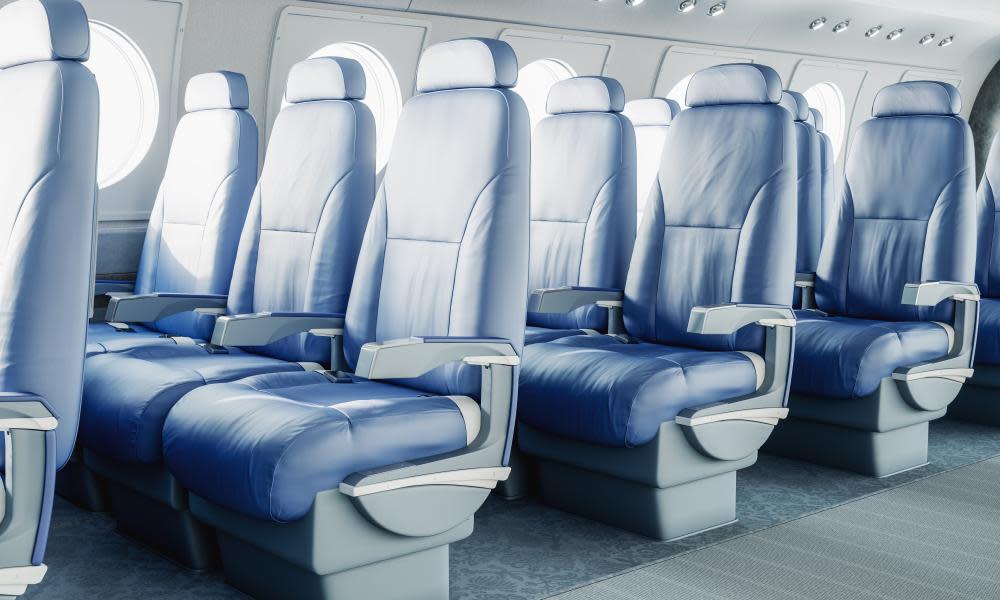Aeroplane seats are shrinking – but how small can they go?

In the world of cheap flights, the plane seat is the prime battleground. According to the New York Times, manufacturers have shaved off crucial centimetres by “replacing padding with elastic mesh”, which sounds a little inhospitable. But is less seat space necessarily uncomfortable?
When Boeing designed its first 737 in the mid-60s, it had 50 to 60 seats. But the first client, Lufthansa, requested the number be increased to 100. The plane lengthened across subsequent iterations and the 700 series now holds 137 passengers. In 2019, Ryanair will take delivery of 737s that contain eight extra seats.
Last year, the US senator Chuck Schumer pointed out that seat pitch – the distance between the back of your seat and the back of the seat in front – has shrunk from about 35in (89cm) in the 70s to 31in, while seat widths have also reduced and humans have grown. (Schumer failed to have minimum seat sizes included in the Federal Aviation Authority’s reauthorisation bill in Congress.) The TripAdvisor company SeatGuru offers comparisons of seat pitches and widths. The narrowest short-haul seat is 15.9in (American Airlines Airbus A319), while no airline has undercut a 28in pitch.
“Companies like ours have spent a long time working to free-up space in the cabin,” says Ben Orson, managing director at JPA Design, which has designed seats for Singapore Airlines. Using composite materials for seats, which can be moulded a bit like a plastic, “enables us to whittle away volumes that are not contributing to comfort”.
Other innovations include moving the pocket for in-flight magazines. “The thickness of an inflight magazine and a duty-free magazine is half an inch!” Orson says. He has been exploring the idea of “moving all that paper-based material into an app”.
Some airlines, including British Airways, are deploying the space shaved off seat width to squeeze an extra seat into twin-aisle planes, so that each row will contain 10 instead of nine seats. At JPA Design, they think customers may one day select their pitch from a menu of different sizes. And in any case, less space does not necessarily mean reduced comfort (the 28in-pitch Geven Essenza seat has been well-reviewed by consumer site Runwaygirlnetwork).
So will seats just go on getting smaller? “I really don’t see [pitch] going lower than 28in,” says Craig Lawson, a senior lecturer in airframe systems at Cranfield University. “We can’t do much about the length of the femur.” He thinks innovations will focus on width. “Bench seats where you’ve basically got a three-seat bench” that could accommodate a family of four, for instance. Meanwhile, Orson is passionate about “the psychological comfort of hygiene”. Travellers may feel less cramped if their seat rejected dirt and there was no magazine pouch to collect crumbs. In future, inflight comfort may be less about the space you have than the way you feel.

 Yahoo News
Yahoo News 
